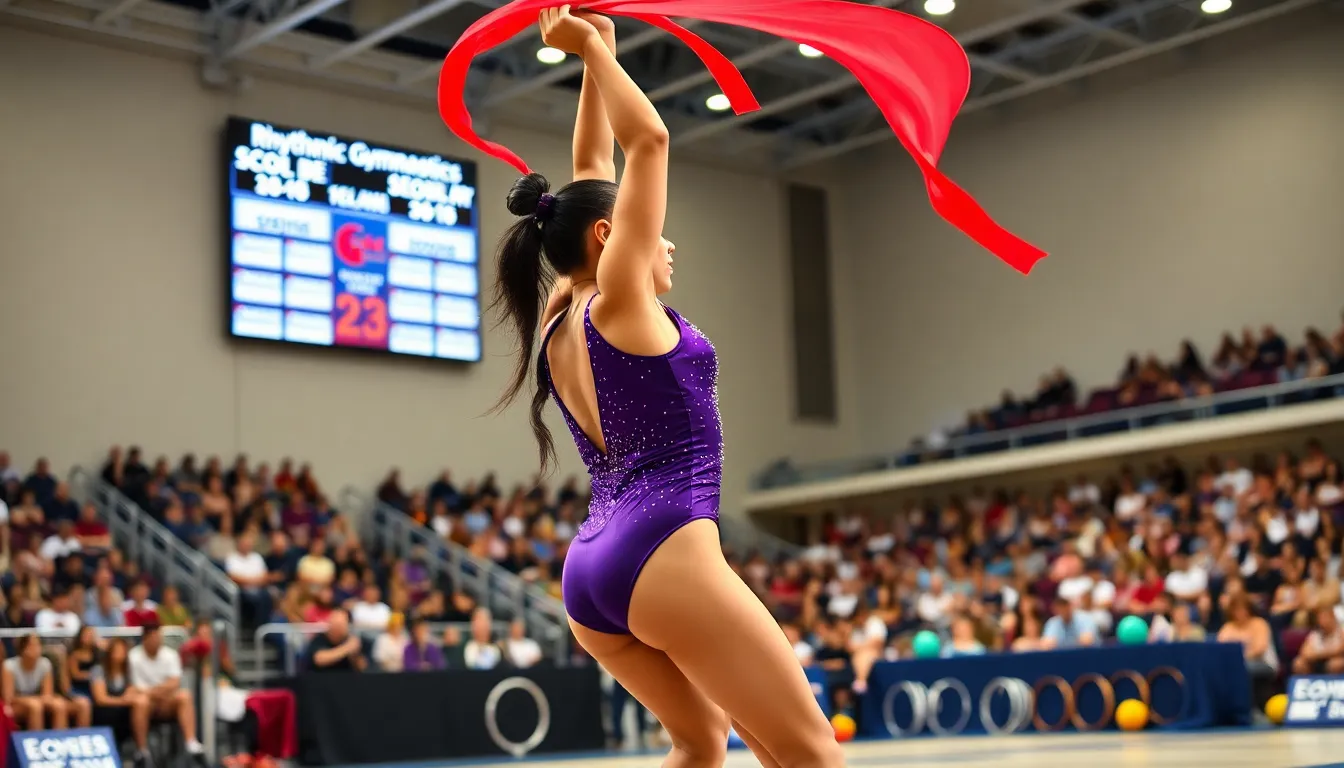Rhythmic gymnastics, a sport that marries athleticism with artistry, has been capturing the attention of sports enthusiasts worldwide. With its dazzling performances, intricate movements, and the graceful use of props such as ribbons and hoops, rhythmic gymnastics stands out in the competitive sports arena. As the popularity of this sport continues to soar, keeping up with the latest trends, athletes, and innovations is essential. This article delves into the latest buzz in rhythmic gymnastics, examining key competitions, notable athletes, recent training innovations, and the influence of technology on the sport.
Table of Contents
ToggleOverview of Rhythmic Gymnastics

Rhythmic gymnastics is a unique blend of ballet, gymnastics, dance, and apparatus manipulation. Athletes perform routines that involve intricate choreographed movements with various props, including ribbons, hoops, balls, clubs, and ropes. This discipline has gained immense popularity since its official inclusion in the Olympic Games in 1984, showcasing the perfect balance between athletic performance and aesthetic precision.
The routines are evaluated on difficulty, execution, and artistry, making the scoring system complex yet fascinating. Rhythmic gymnastics emphasizes flexibility, coordination, and creativity, allowing athletes to express themselves while performing at the highest level.
Key Competitions and Events
Major competitions in rhythmic gymnastics highlight the best talents from around the world, offering a platform for athletes to showcase their skills. The World Rhythmic Gymnastics Championships and the European Championships are two of the most prestigious events in the sport.
World Rhythmic Gymnastics Championships: Held annually, this competition sees thousands of gymnasts compete, vying for titles across individual and group events. The latest championships revealed emerging talents and reaffirmed the dominance of seasoned athletes.
Olympic Games: The rhythmic gymnastics events at the Olympics draw significant global attention, demonstrating the sport’s peak competition. Tokyo 2020 showcased incredible performances, with athletes pushing the boundaries of creativity and technical skill.
Grand Prix Series: This series features numerous international competitions throughout the year, providing athletes with chances to earn recognition and accumulate points for world rankings. Recent events highlighted the versatility of various competitors and the evolution of routines.
Notable Athletes to Watch
Currently, several athletes have risen to prominence in the world of rhythmic gymnastics.
Dina Averina: The Russian gymnast is known for her extraordinary control and expressive performances. As a multiple World Champion, she continues to be a significant figure in the sport, with her routines often leaving audiences and judges in awe.
Arina Averina: Both Averina sisters have made an indelible mark on rhythmic gymnastics. Arina, alongside her sister, illustrates the strength and grace needed to excel at the highest levels.
Linoy Ashram: Representing Israel, Linoy Ashram made headlines at the Tokyo Olympics by clinching the gold medal in individual rhythmic gymnastics, breaking the traditional dominance held by Russian athletes. Her dynamic routines have captivated audiences, setting her apart as a future star in the sport.
Recent Innovations in Training Techniques
Training techniques in rhythmic gymnastics are evolving rapidly, reflecting advancements in sports science and athlete performance. Recent innovations focus on improving flexibility, strength, and coordination, key components of rhythmic gymnastics.
Cross-Training: Athletes are increasingly engaging in cross-training methods, incorporating disciplines such as yoga and Pilates, which enhance core strength and improve mental focus, crucial for executing complex routines.
Video Analysis: Coaches and athletes leverage video technology to analyze movements and refine techniques. By breaking down performances frame by frame, athletes can identify areas for improvement, leading to better execution during competitions.
Mindfulness and Visualization: Psychological training has gained prominence in the sport, with athletes using visualization techniques to mentally prepare for performances. Such methods help to reduce competition-related anxiety and improve focus, thereby boosting overall performance outcomes.
Impact of Technology on Rhythmic Gymnastics
Technology has profoundly shaped rhythm gymnastics, influencing everything from training methodologies to competition presentations.
Wearable Tech: Many rhythmic gymnasts now use wearable technology to monitor their physical performance metrics. Devices measuring heart rates and movement efficiency allow coaches to tailor training programs, ensuring athletes are conditioned optimally for competition.
Digital Platforms: The rise of social media and streaming services offers gymnasts a unique way to showcase their talent. Athletes can share their routines online, connect with fans, and even learn from fellow competitors across the globe. This digital presence not only aids in the promotion of the sport but also enhances communication within the gymnastics community.
Enhanced Scoring Systems: Advances in scoring technology have improved transparency and accuracy during competitions. New scoring systems have been developed to provide detailed feedback on performances, impacting how routines are designed and executed based on judging criteria.
Future Trends and Predictions
As rhythmic gymnastics continues to grow, several trends are likely to shape its future.
Increased Popularity in Mixed-Gender Events: There’s a movement toward incorporating mixed-gender events in competitions to promote inclusivity. This could attract new fans and open up fresh opportunities for athletes.
Focus on Mental Health: The importance of mental health in athletics is gaining recognition, leading to better support systems for athletes. Expect a greater emphasis on psychological well-being, ensuring gymnasts are not just physically fit but also mentally resilient.
Sustainability Initiatives: With the ongoing global focus on sustainability, rhythmic gymnastics events may increasingly prioritize eco-friendly practices, such as sustainable venues and environmentally friendly purchasing policies.
Conclusion
Rhythmic gymnastics is at an exciting juncture, characterized by innovative techniques, groundbreaking athletes, and the positive influence of technology. As competitions begin to incorporate new trends and emphasize mental health and inclusivity, the sport is witnessing a renaissance that promises to elevate its stature further. Keeping an eye on the developments in rhythmic gymnastics will not only be rewarding for fans but also inspiring for the next generation of athletes. As they strive to push boundaries, the future of rhythmic gymnastics looks bright.









